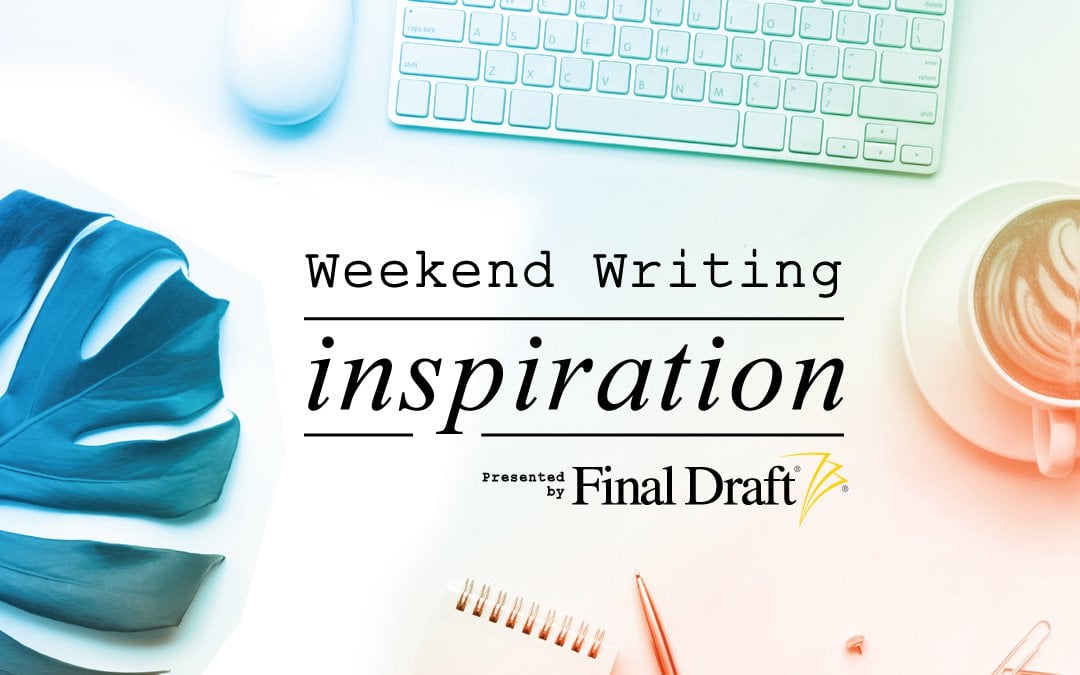10 Ways to Beat Writer’s Block According to Science
August 4, 2023
If you’ve ever tried to write a script or short story or article or term paper, you’ve no doubt experienced what’s known as “writer’s block” – that somewhat mysterious, maddening condition comparable to an athletic slump, or just a bad day when you can’t get out of bed. The words and the story just … don’t … (add something here).
In the Oscar-winning 1998 film Shakespeare in Love, Joseph Fiennes’ titular character attempted to describe the condition. In trying and failing to write Romeo & Juliet (with a working title of Romeo & Ethel: The Pirate’s Daughter), he whipped out every sex-starved simile he could conjure:
"It's as if my quill is broken. As if the organ of the imagination has dried up. As if the proud tower of my genius has collapsed.”

And for every writer that claims they don’t believe in the phenomenon, there is another writer offering a personal example. Joseph Mitchell, the prolific journalist who penned dozens of classic articles for The New Yorker, including “Joe Gould’s Secret,” failed to produce anything – a single published word! – in the final 30+ years of his life.
It’s no wonder that in ancient Egypt, with cuneiform still drying on the clay tablets, writers prayed to Nisaba, the goddess of writing (and grain). In Greek and Roman culture, the nine daughters of Zeus and Mnemosyne were known as The Muses – the goddesses thought to grant inspiration to anyone engaged in an act of writing, music, art, etc.
Is Writer's Block Real According to Science?
It wasn’t until 1947, however, that Freudian psychoanalyst Edmund Bergler first coined the term “writer’s block,” and he published a paper in 1950 titled, “Does ‘Writer’s Block’ Exist?” In true Freudian style, he called it a “neurotic inhibition of productivity in creative thinkers,” and he believed that it was a form of unconscious masochism. (Thanks, Bergler!)
There might not exist a more insightful work of humor on the subject than psychologist Dennis Upper’s 1974 paper, “The Unsuccessful Treatment of a Case of Writer’s Block.” The paper, you’ll note, has no content.
Scientific Studies on Writer's Block
But through all of these struggles, and through innumerable scientific advances – like, you know, the discovery of penicillin, the invention of the atomic bomb, and several trips to the moon – it would seem that we would by now have some solid over-the-counter remedies for writer’s block.
Right?

Let’s start with the brain. This article from The Conversation summarizes several studies that focus on the many regions of the brain that activate during the writing and creative process. This includes the left side of the frontal lobe, which we know handles language, as well as the right prefrontal cortex, and subregions that handle planning and control, memory, and motor areas. It offers exercise to stimulate those areas.
But other studies, and various pieces of anecdotal evidence, suggest that writer’s block comes from outside sources or adjacent biological/psychological challenges that then affect the function of the brain. According to the thorough 2019 paper, “An Analysis of Writer's Block: Causes, Characteristics, and Solutions,” by Sarah J. Ahmed, the causes can be categorized as “physiological (stress, anxiety, extreme emotional states, mental and physical illness),” “motivational (fear of criticism or rejection, performance anxiety, and loss of enjoyment,” “cognitive (perfectionism, problems due to errors in planning … or rigid thinking,” or “behavioral (procrastination, being too busy to write”).
(Related: This article from Freelancers Union mentions one study that found the cause of writer’s block to be unhappiness. (Just get happy!))
Read More: 10 Struggles Only Screenwriters Understand
Science-Based Solutions to Writer's Block
But to the point: Below are 10 methods to address the biological and psychological blocks, tap your muse, and get revenge on that masochist within.
Take a walk or engage in exercise
If walking was good enough for Aristotle, Socrates, Plato, and many other big thinkers, it’s probably good enough to at least try it. Get up from your computer, and go outside. Perambulate. Breathe. Nod at passing pedestrians and their dogs. Or go work out at the gym. Or do some jumping jacks and push-ups. Science has long trumpeted the many mental health benefits of walking and exercise. And in Ahmed’s “An Analysis of Writer's Block,” writers who tried to cure their block with a walk around the block or exercise succeeded 100 percent of the time. (You can’t get better results than that.)

Call your friend or colleague
Talk through the project that’s blocking you. Or just talk about anything. We’re social animals. Interacting with others “increases a hormone that decreases anxiety levels and makes us feel more confident in our ability to cope with stressors.” Among other benefits. In Ahmed’s study, 67 percent of the writers who tried this method succeeded in reducing writer’s block.
Go to talk therapy
Sure, you keep hearing those Better Help ads and you really mean to get into therapy again. But what if, along with helping your love life, it sparks your writing life? Narrative therapy might be the place to start.
Try the “Wandering Brain Technique”
What’s that, you ask? Basically, you engage in a mundane, repetitive activity – folding laundry, knitting, shooting free throws. And according to this study, “When unoccupied by external demands, the human mind often works with particular rigor.”
Use ice-cold water
Immerse your face in a bowl of it for as many seconds as you can take. Or take a cold shower. For those writers who experience intense emotions or anxiety, science tells us that the activity triggers our “dive response” – it calms us down
Beat the clock
Or rather, try the Pomodoro Technique. In short, the premise proposes that our brains work best in 25-minute increments. So, set a timer for 25 minutes and write. Take a five-minute break when the time’s up. Start again.

Jumpstart your brain
Sometimes you just need to stop thinking about what you’re writing and try to write something else. Here are some great writing prompts.
Turn yourself into one of Pavlov’s dogs
You know about the Pavlov Experiment, right? Condition your brain to know that writing is something you reward yourself for. Did you write for 15 minutes this morning? Eat a favorite snack. Complete half of your writing goal? Go do something fun. Help your brain realize it should be doing more of this. And if you finish a big project, reward yourself accordingly.
Listen to other Hollywood writers
In this video from Variety, some of the top names in the biz share their methods for overcoming writer’s block.
And if all else fails, keep it simple and …
Know what’s going to happen next
Ernest Hemingway, who wrote a few things, would stop writing each day when it was going well. “The best way is always to stop when you are going good and when you know what will happen next. … That way your subconscious will work on it all the time.”
Read More: 7 Strategies for Beating Writer's Block
Written by: Jamie Allen
Jamie Allen is a writer based in Los Angeles. He's the creator of the Squirrel Census, a science, design, and storytelling project that was featured in The New York Times and other outlets.



